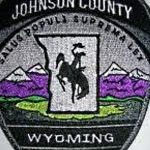News – Sheridan Media

The one of the new exhibits at Fort Phil Kearny is titled Coming Home: The Northern Cheyenne Odyssey. The exhibit focuses on the stories of two Northern Cheyenne bands, one led by Chief Dull Knife and the other led by Chief Little Wolf, from 1876 to the present. Aug 1- Sept 14:
The Northern Cheyenne have an associate history with FPK, as do some of the people highlighted in the exhibit, like Little Wolf.

Little Wolf was one of the major chiefs of the Cheyenne Tribe. He was born in the mid-1840s in Montana, He was known as a great military tactician when he led his people from Oklahoma back to their Montana homeland in 1878.
This from the Star Valley Independent, August 4, 1922
Little Wolf, Chief of The Northern Cheyenne – Much has been written about Chief Joseph’s retreat which won for him the name of the Indian Xenophon. Little Wolf (Oh kum hknklt), chief of the Northern Cheyennes, might well lay claim to that title, for in many respects his dash for freedom was even more remarkable than that of the Nez Perce. More than 13,000 soldiers at one time or another tried to stop the flight of Little Wolf and his little band of 70 men across the flat plains of Kansas, Nebraska and the Dakotas.
“There never was such another journey since the Greeks marched to the sea,” says George Bird Grinnell, the ablest chronicler of this splendid migration. When Little Wolf and his comrade in arms, Dull Knife, resolved, in defiance of the government, to lead their people back to Montana, their agent in Indian Territory tried to persuade them to stay one year more.
However, the Cheyennes started and soldiers were sent after the fugitives. Within one week they had fought them five times, but failed to stop them. Then the whole available force of the United States army in the West was called into action and six lines of military barrier were thrown out to stop the fleeing Cheyennes. The last line was far up in Montana, showing what the army thought of these hard riding, hard-fighting warriors. Stopping to fight when they were attacked, then going on after they had beaten off the soldiers, Little Wolfs people kept on until they had cut through three of the military lines. Here Dull Knife and Little Wolf separated. Dull Knife was captured and imprisoned at Fort Robinson, but Little Wolf kept on until he reached the sand bills of Nebraska. The soldiers were unable to find him. Early in the spring he took up his journey again and his band finally camped on the Little Missouri river in Montana.
He had reached his homeland at last. Here he was discovered by Lieut. W. P. Clark, loved and respected by all the Cheyennes as “White Hat,” their friend. Persuaded by Clark, Little Wolf went with him to Fort Keogh where he surrendered to General Miles. The general invited him to enlist us a scout and in spite of the hardships which he had Just passed through, Little Wolf accepted the invitation and proved a valuable ally against the hostile Sioux. Little Wolf was finally settled on the Lame Deer reservation and died November 14, 1904.
This from the Cheyenne Daily Leader, March 29, 1879

Later, after Little Wolf was returned to the reservation, the Cheyenne Weekly Leader, May 9, 1877 had this story. What is interesting about this the fact that they re-engineered the military rifles to suit their style of warfare.
A military correspondent at Red Cloud writes the following, it is all very well for military critics in the east to say that the Indians are being coaxed in, but please to permit us -who have participated in the battles, and who now see the squalor and wretchedness, and utter submission of the vanquished —to say that it has been the bitterest dose of coaxing ever administered under our observation. Less than a year ago the names, Roman Nose, Dull Knife, Little Wolf, Standing Elk, and those of other prominent chieftains were only mentioned with dread by the average citizen.
To-day we see them disarmed, dismounted, helpless, and,so far, not even expressing the shadow of a demand.
I have spent considerable time to good advantage in examining the array of firearms thus far surrendered, and which are now stored in an ordnance-room at Camp Robinson. Almost every pattern of a rifle and carbine extant is represented, while Colt’s improved army revolver is about the only small-arm turned in. The young and prominent warriors usually produced the best Sharp’s sporting rifles or carbine, or else the regular army rifle or carbine; and the chiefs were armed with fine Winchester repeating rifles.
Then the old men and boys turned in muzzle-loaders of every pattern, from the, Hallmark Kentucky squirrel-rifle to a terrible weapon approaching the blunderbuss style. Although not compelled to surrender their bow and arrows, many braves gave those up voluntarily.
The fine workmanship displayed in repairing and ornamenting rifles leads to the conclusion that an average Indian possesses mechanical ability of no low grade. Few of the sights attached to rifles by manufacture suit the Indian, and he will manage to re-sight his piece and make it shoot close no matter in what isolated wilderness he may be located.

I found guns restocked with native wood; re-sighted with bits of bone and steel; original fastenings replaced with sinew or wire; and all accomplishedin a manner as effective as it was original. It is plain that an Indian’s very existence depends upon his possessing a weapon of some kind, for the Cheyennes who have surrendered here had hardly turned in their arms than they commenced manufacturing their old-time companion, the war-club. But this only illustrate some of their strong traits. The ruins of all their years’ accumulations have scarcely fallen before they commence gathering together and building anew. The Cheyennes are not feeling kindly towards their confederates, the Sioux, and, should any of the latter persist in making war, the former would enlist with the Government in a body, and assist in closing the war with all the ardor and ferocity of their natures.
The Cheyennes are recognized as being possessed of more bravery, better judgment, and more determination than the Sioux.
They rallied promptly to the assistance of the Sioux when the war broke out, and have done the bulk of the fighting, considering their numbers. They have also been the heaviest losers, in fact, are so miserably poor to-day that they can scarcely boast of a decent
wigwam. When Gen. McKenzie destroyed their village in his battle of last December, the survivors, with what few ponies they had left, made their way to the Sioux camp, expecting food and shelter. But, wounded, and frozen, and half starved as they were, their reception was emphatically chilly; and this account for the sour milk in the cocoanut. (this is the way it was spelled in the paper) If ever opportunity offers, they will remind their former allies of that frigid reception in the northwestern wilds in no uncertain way.
Lieut. Clark’s detachment of Cheyenne scouts will do service of incalculable value here at the Agency, as much on account of the stimulus mentioned above as from any other cause. They make an excellent patrol or police force, and some have already exhibited the striking traits of detective.
This next story is interesting, especially when one discovers that Lone Wolf actually died in 1904. Could the Little Wolf in this story be Young Little Wolf? It is included because it talks about Little Wolf’s contribution to General Miles as a scout.

The Sheridan Daily Enterprise, MAY 7, 1910
(News from Fort Mackenzie) – Little Wolf’s Visit. A visit yesterday morning from Little Wolf, a noted chief of the Cheyenne Indians, carried Colonel Davis back to the old frontier days when the office of the commandant was often filled with representatives of the various tribes. Little Wolf came over from the Rosebud Agency and carried with him very strong testimonials from General Miles and other officers showing that he had served faithfully as a scout in the troubled Indian times. He is upwards of sixty years old and was accompanied by Gray Eagle and Sharp Teeth and several women. One of the women talked English fluently and acted an interpreter. The Indians sat around Colonel Davis office fora time smoking up his good cigars and telling of the time when all visiting Indians received goodly mounts ot rations as gifts at the hands of the “command’ as they styled the commanding officer. Colonel Davis remembered that this was true and rather than disappoint he paid at the commissary for a number of rations for them. Of course the Indian chief was given the liberty of the post and a number of officers gave him and clothing. The attention accorded him was due solely to the splendid letter he carried from officers who were noted Indian fighters.
This tidbit talks of one of Little Wolf’s sons, Grasshopper. The Sheridan Post, June 21, 1912
Indians Break Camp The big bunch of Northern Cheyenne that for several days had been encamped near the old dump grounds east of the city, have pulled down their tepees, packed their belongings and hiked back to the agency. There were nearly three score of Indians In the bunch and apparently they were here without permission of the agent, for a message was received by Chief of Police Ridgway from Major Eddy, Wednesday, asking him to round them up and start them toward home.
Grasshopper, son of Little Wolf, a famous chieftain, was in charge of the Indians, and he told Chief Ridgway that they were expecting some Southern Cheyennes from Oklahoma, who were coming on a visit, and he asked to be allowed to wait until his friends arrived that the chief gave permission for them to stay until yesterday. Wednesday evening the Southern Cheyennes arrived, and the whole bunch departed on their homeward way rejoicing.
The exhibit about the Northern Cheyenne Exodus at Fort Phil Kearny will be on display through Sept 14, and it was researched, organized, and designed from a Northern Cheyenne perspective, and created by Northern Cheyenne historians, artists, and tribal members. Loaning Institution: Western Heritage Center, Billings, Montana
Last modified: August 11, 2025






